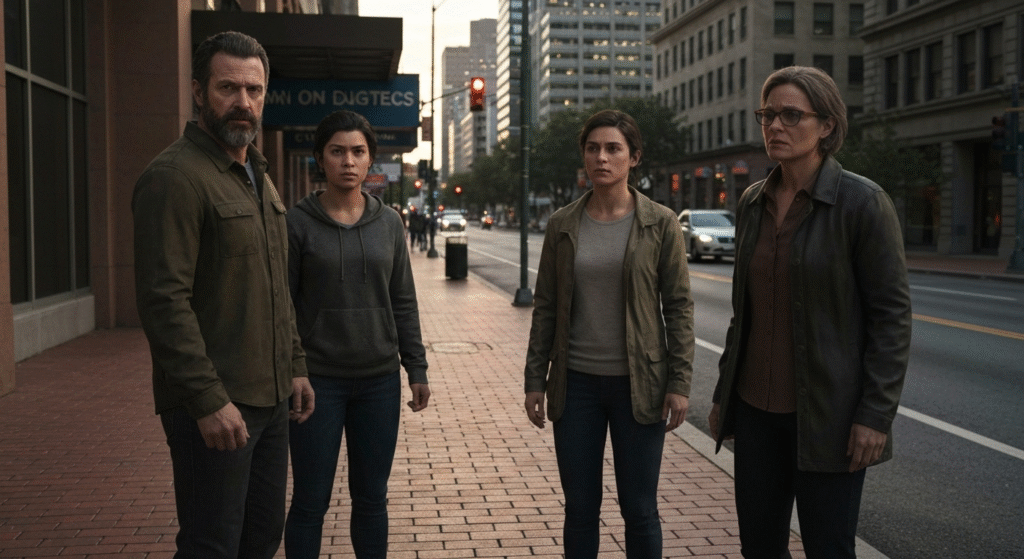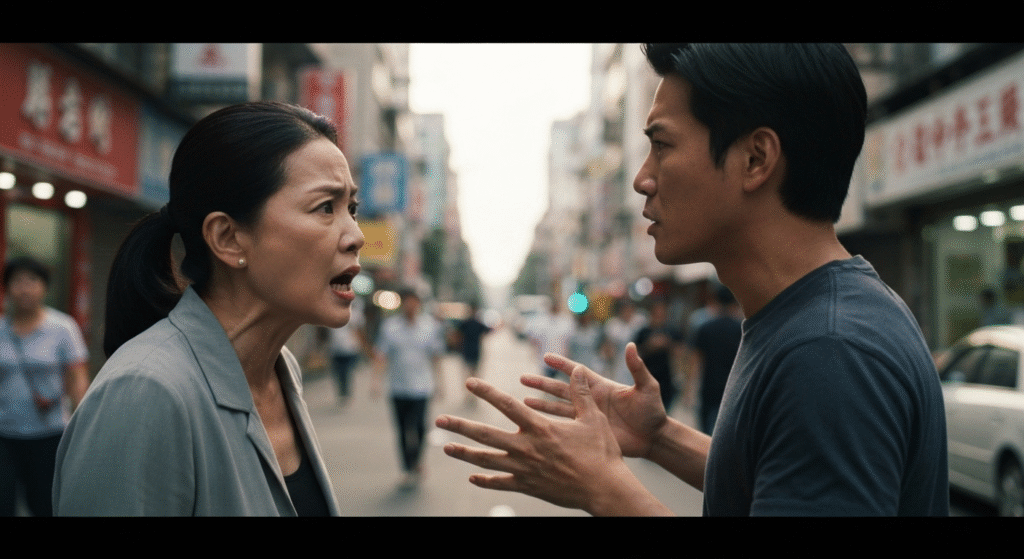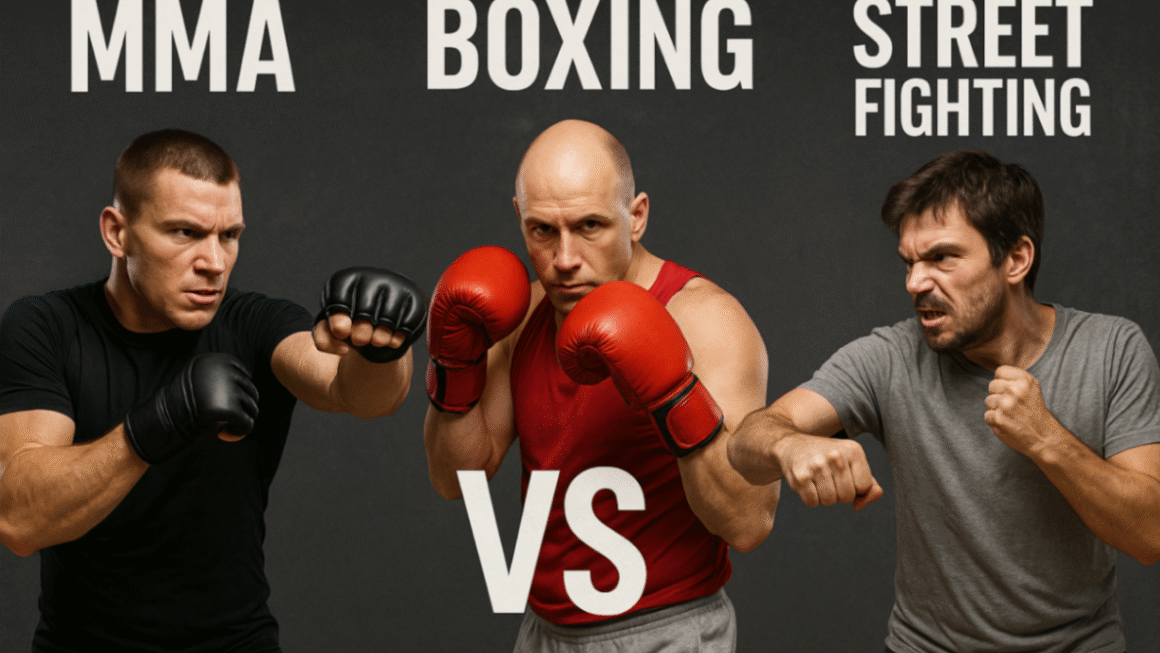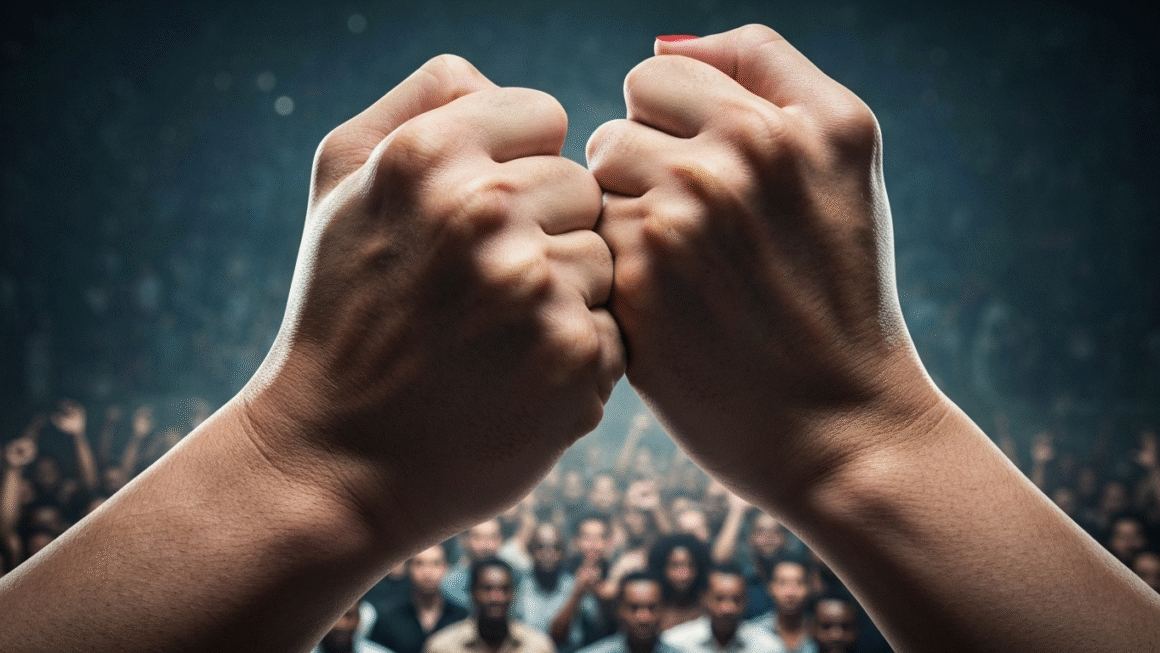Key Highlights
- Avoiding a street fight is the most effective form of self defense, as real-world altercations are unpredictable and dangerous.
- The only way to guarantee you win a street fight is to avoid it entirely; running is a valid and smart tactic.
- A trained martial artist knows that the best bet is to de-escalate a situation before the first punch is thrown.
- Situational awareness and recognizing high-risk environments are crucial skills for preventing confrontations.
- Projecting confident body language can deter potential attackers without escalating tensions.
- If fighting is unavoidable, the goal is to neutralize the threat quickly and disengage, not to win a contest.
Introduction
The idea of street fighting often brings to mind dramatic movie scenes, but the reality is far more chaotic and dangerous. Unlike organized martial arts or boxing, there are no rules, no referees, and no respect between opponents. The consequences can be life-altering, ranging from serious injury to legal trouble. True self defense isn’t about winning a brawl; it’s about having the intelligence and skills to avoid one altogether. This guide will show you how to master the art of walking away.
Recognizing Situations That Can Lead to a Street Fight

Your primary tool for self defense is your awareness. The only thing that can reliably protect you is the ability to recognize a dangerous situation before it unfolds. Many instances of street fighting begin in predictable, high-risk environments where egos and tempers are high.
In places like the United States, where weapons can be a factor, misjudging a situation can have fatal consequences. Learning to spot the early warning signs of aggression is not just smart; it is essential for your safety. The following sections will detail what to look for and which places to avoid.
Early Warning Signs of Potential Aggression
An attacker often displays clear signals before becoming physically violent. Research shows that street fighting rarely comes from nowhere; it escalates from verbal spats or perceived slights. Your best bet for self defense is to notice these cues and remove yourself from the situation immediately.
The key is to observe behavior. An individual may close the distance, adopt an aggressive stance, or speak in a challenging tone. These are red flags that the situation is deteriorating. Recognizing these signs gives you a crucial window of opportunity to de-escalate or leave. An attacker is looking for a reaction, and your best technique is to not give them one.
Pay attention to these specific warning signs:
- Clenched fists or a tensed jaw.
- An aggressive, forward-leaning posture.
- Intense, unbroken eye contact or, conversely, looking around for accomplices.
- Loud, aggressive, or challenging speech.
Identifying High-Risk Locations and Timing
A fundamental aspect of self defense is simply avoiding places where trouble is likely to brew. You probably already know which areas in your town are high-risk. These are often environments with a high concentration of alcohol, drugs, and ego-driven behavior, which are common precursors to street fighting.
An ounce of prevention is worth a pound of cure. Making a conscious choice to avoid certain venues, especially late at night, drastically reduces your chances of being involved in a violent encounter. This isn’t about living in fear; it’s about being smart and proactive about your safety. In the United States, taking these precautions is even more critical.
Here are some common high-risk environments and times to be extra cautious:
|
Location Type |
High-Risk Timing |
Common Triggers |
|---|---|---|
|
Bars and Nightclubs |
Late-night hours (after 11 PM) |
Alcohol, crowded spaces, social posturing |
|
Secluded Streets/Alleys |
Nighttime or low-light hours |
Opportunity for muggings or ambushes |
|
Public Events/Concerts |
During and after the event |
Large crowds, substance use, high emotions |
|
Areas with Known Crime |
Any time, but especially at night |
Pre-existing patterns of violence |
Understanding the Power of Body Language
Your body language speaks volumes before you ever say a word. It can either mark you as an easy target or signal that you are not someone to be trifled with. This is a core principle in both self defense and martial arts. A trained boxer, for example, carries themselves with a quiet confidence that deters many would-be aggressors without inviting a challenge.
Using your posture and gestures to project calm confidence can be one of the most effective ways to avoid a physical confrontation. The goal is to appear aware and self-assured, not aggressive or fearful.
Using Non-Threatening Gestures
When you sense tension, your gestures can either fuel the fire or extinguish it. Aggressive body language, like pointing or getting in someone’s personal space, will almost certainly make things worse. The alternative is to use open, non-threatening gestures to signal that you are not looking for a fight.
This approach is about using your body to communicate peace and a willingness to de-escalate. Showing open palms is a universal sign of peace and indicates you are unarmed and not a threat. It combines physical posture with an attitude of kindness, which can be disarming to an aggressive person. Unlike a boxer preparing to strike, your posture should be defensive but not combative.
Adopt these non-threatening gestures to help defuse a situation:
- Keep your hands open and visible, held up in a passive “fence” position.
- Avoid crossing your arms, which can seem defensive or challenging.
- Take a slight step back to create space, showing you don’t want to encroach.
- Maintain a neutral facial expression, avoiding scowls or fearful looks.
Maintaining Confident Yet Calm Posture
A confident yet calm posture is your first line of defense. Predators and bullies often look for soft targets—people who appear lost, distracted, or weak. By simply carrying yourself with purpose, you can deter a significant amount of unwanted attention. This is a skill every martial artist learns early in their training.
Think about how a professional in boxing or another combat sport stands: erect, balanced, and aware. Your goal is to emulate that presence without the aggressive edge. Walk with your head up, your shoulders back, and your torso straight. This projects awareness and strength, signaling that you are not an easy victim.
To cultivate a confident and calm posture, focus on the following:
- Walk with your head held high, scanning your surroundings.
- Keep your shoulders relaxed and back, not hunched over.
- Maintain a steady, balanced gait.
- Avoid looking down at your phone or seeming distracted in public spaces.
Proven Techniques to De-Escalate Confrontations

When avoidance fails and you find yourself in a tense situation, your next best tool is de-escalation. The ability to talk someone down from a state of aggression is a powerful self defense skill. Even a highly trained martial artist or Krav Maga expert understands that the safest outcome is one where no punches are thrown.
The goal is to de-escalate the conflict by using specific verbal and non-verbal strategies. You want to offer the aggressor a way out of the confrontation that allows them to save face, while ensuring your own safety.
Verbal Strategies for Calming Aggression
Your words can be your most effective self defense weapon. In many cases, a sincere apology or a calm statement is the only way to defuse a situation that is heading toward violence. Using politeness is not a sign of weakness; it is a strategic tool to signal that you are not a threat.
It doesn’t matter who is right or wrong. Your priority is to get home safely. Offering a simple phrase like, “My bad, I didn’t mean to bump into you,” can take all the energy out of a potential conflict. You must speak strongly and clearly, but not condescendingly. The goal is to clear up a misunderstanding, not to win an argument.
Here are some verbal tactics to try:
- Use a calm, even tone of voice.
- Apologize, even if you don’t think you’re at fault.
- Show empathy by saying something like, “I can see why you’re upset.”
- Avoid accusatory language; use “I” statements instead of “you” statements.
The Role of Kindness and Politeness in Defusing Conflict
It may seem counterintuitive, but kindness and politeness can be incredibly effective self defense tools. An aggressive person is often expecting resistance or fear. When you respond with unexpected courtesy, it can disrupt their aggressive momentum and force them to reconsider their actions.
The best fight is the one that never happens. By choosing politeness, you are taking control of the situation and steering it away from a physical outcome. This approach can often prevent the first punch from ever being thrown. As retired boxer Ed Latimore noted, “Good manners never made a situation worse.”
Here’s how kindness can work in your favor:
- It can disarm an aggressor who is expecting a confrontation.
- It shows you are in control of your emotions.
- It provides the other person with a non-violent “out.”
- It makes it harder for them to justify escalating to violence.
Safe Strategies for Walking Away and Avoiding Provocation
One of the most powerful and underrated self defense skills is simply walking away. Your ego is not worth a trip to the hospital or jail. When confronted, your best bet is to disengage and leave. Running is a perfectly acceptable strategy; it means you live to see another day.
However, walking away requires its own set of safe strategies. You must exit the situation without turning your back on an immediate threat or saying something that provokes the aggressor further. The key is to create distance calmly and deliberately.
How to Exit Confrontational Situations Without Escalation
If someone is actively trying to provoke you into a confrontation, your goal is to exit without taking the bait. The only thing that matters is getting away safely. The best way to do this is to continue to de-escalate verbally while physically creating distance.
Do not turn your back abruptly and run unless you are already at a safe distance. Instead, take slow, deliberate steps backward while maintaining a non-threatening posture with your hands up. This allows you to stay aware of their movements as you increase the space between you. Your objective is walking away, not winning a war of words.
Follow these steps to exit a confrontation safely:
- Continue using calming verbal cues like, “You’re right, I’m sorry, I’m leaving.”
- Slowly back away to create distance without making sudden moves.
- Keep your eyes on the person as you retreat.
- Once you have enough space, turn and move quickly to a safe, populated area.
Martial Artists’ Approaches to Avoiding Street Fights
You might think a trained martial artist would be eager to test their skills, but the opposite is true. Experts in boxing, Krav Maga, and other disciplines are often the most committed to avoiding street fights. They understand the chaos, the unpredictability, and the severe risks involved in a real-world altercation better than anyone.
Their self defense training isn’t just about physical techniques; it’s about developing the awareness and self-control to prevent a fight from ever starting. For a true martial artist, the greatest victory is walking away unharmed.
Practiced Awareness and Self-Control Techniques
A skilled martial artist or boxer avoids fights by treating awareness and self-control as practiced disciplines. Situational awareness becomes second nature, allowing them to spot potential trouble from a distance and change their route or behavior to avoid it completely.
This isn’t about paranoia; it’s about being present and engaged with your surroundings. Furthermore, their training instills a deep sense of self-control. They learn to master their ego and emotions, so they are not easily provoked by taunts or challenges that would infuriate an untrained person. This emotional regulation is a key defensive tool.
Martial artists practice these techniques:
- Constant Awareness: Always being mindful of entry/exit points and the behavior of people around them.
- Ego Management: Understanding that proving a point is not worth the risk of a fight.
- Emotional Regulation: Not reacting angrily to provocation.
- Risk Assessment: Quickly analyzing the cost-benefit of any confrontation.
Lessons from Real-Life Experiences Outside the Ring
The real-life experiences of trained fighters offer powerful lessons. A martial artist knows that a street fight is brutal and unforgiving. There are no weight classes, no rules against weapons, and no guarantee that an opponent’s friends won’t jump in. They have seen what happens when things go wrong.
Many seasoned fighters have stories of backing down from drunk or aggressive individuals. They weren’t afraid; they were smart. They recognized that there was nothing to gain and everything to lose. In a real-life street fighting scenario, the ground is hard, people have knives, and god knows what else can happen.
These are the lessons from their experience:
- Street fights are chaotic and unpredictable.
- An opponent may have friends or a concealed weapon.
- There are serious legal and physical consequences, even for the “winner.”
- The smartest and toughest people are often the ones who walk away.
Weighing the Risks—When Avoidance Is Better Than Fighting
Choosing avoidance is almost always the superior self defense strategy. Engaging in a physical fight carries immense risks that go far beyond a bruised ego. A single punch can lead to a fall that causes permanent brain damage or death, potentially landing you with a manslaughter charge.
The risks of fighting far outweigh the risks of walking away. A bruised ego heals, but a criminal record or a life-altering injury does not. The only time fighting becomes a consideration is when avoidance is impossible and you are facing an immediate threat of serious harm.
Physical, Legal, and Emotional Consequences of Engagement
The consequences of a street fight extend across every aspect of your life. Physically, you risk everything from cuts and broken bones to permanent disability or death. There is no referee to stop the fight when someone is hurt, and the conflict can escalate in seconds.
Legally, even if you didn’t start the fight, you can face serious charges like assault or manslaughter. Proving self-defense can be difficult and expensive. Emotionally, the trauma of a violent encounter can last for years, causing anxiety and PTSD. These are risks you take on the moment you decide to engage.
Here is a breakdown of the potential consequences:
|
Consequence Type |
Examples |
|---|---|
|
Physical |
Broken bones, brain injury, permanent disability, death. |
|
Legal |
Arrest, assault charges, manslaughter charges, lawsuits, prison time. |
|
Emotional |
PTSD, anxiety, fear, trauma, guilt, regret. |
|
Financial |
Legal fees, medical bills, lost wages. |
Situations When Standing Your Ground May Be Necessary
While avoidance is paramount, there are rare situations where standing your ground and fighting back is your only option. This is the last resort, reserved for times when you or your loved ones are in immediate danger of physical harm and you cannot escape. The best fight is one you avoid, but the only worse fight is one you lose when your life is on the line.
In these moments, your goal is not to win, but to survive. Your actions should be focused on neutralizing the attacker just enough to create an opportunity to escape. This is true self defense: using the necessary force to protect life and nothing more.
You may need to fight back if:
- You are cornered and cannot retreat.
- An attacker is physically assaulting you or someone you are protecting.
- The attacker is armed and escape is not possible.
- You are defending your family or children from direct harm.
Conclusion
In conclusion, mastering the art of avoiding a street fight is crucial for maintaining your safety and well-being. By recognizing early warning signs of aggression and understanding body language, you can navigate potentially dangerous situations with confidence. Employing verbal strategies to de-escalate confrontations, along with the kindness and politeness that can diffuse tensions, will serve you well in challenging encounters. Remember, there are safer alternatives to confrontation, and knowing when to walk away is often the best choice. Equip yourself with these techniques, and empower yourself to stay safe in any environment. For further insights and personalized advice on conflict resolution, feel free to reach out for a consultation.
Frequently Asked Questions
What are the most effective ways to spot trouble before it starts?
The most effective self defense tactic is situational awareness. Pay attention to your surroundings, recognize aggressive body language, and avoid high-risk locations. In the United States, where weapons can be present, the only thing that truly keeps you safe is preventing a street fight before it begins.
Is walking away from a street fight always the safest choice?
Walking away is almost always your best bet. However, if you are physically cornered or an attacker is assaulting you or your family, you may need to use self defense to create an escape opportunity. The risks of a street fight, including manslaughter charges, make avoidance the priority.
How can I stay calm if someone tries to provoke me in public?
To stay calm, focus on your breathing and your goal: de-escalation. Training in martial arts or Krav Maga helps build this composure. Remind yourself that the best fight is the one you avoid, and maintaining a calm demeanor is your most powerful self defense tool.




